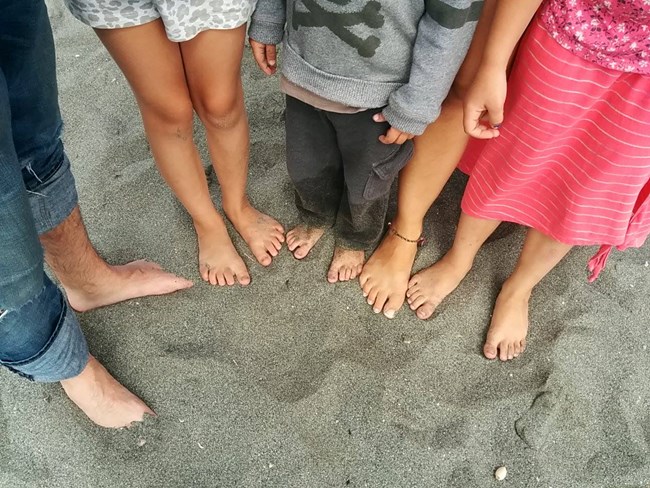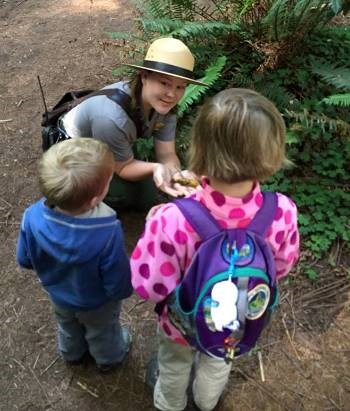
NPS / Liam Carey-Rand Know Your Carbon FootprintThere are many ways that you can help protect more than Redwood National and State Parks by reducing your greenhouse gas emissions. Thinking locally will help the globe. Individuals are part of the solution whether it is by modifying lifestyle choices, by participating in community action, contacting policymakers, or mitigating the impacts of climate change at home. Individual choices can have a dramatic impact on global climate change. Do you know what your "carbon foot" is? The Environmental Protection Agency has developed tools to help individuals and households reduce greenhouse gas emissions and take action, such as a Personal Emissions Calculator. This calculator provides an estimate of household greenhouse gas emissions resulting from household energy use and waste disposal, and it gives you information you can use to identify ways to reduce your personal greenhouse gases.

Talk About It!Even though studies and surveys like the Six America's Report show that 60% of people in the USA are either concerned or alarmed about climate change, many people are not talking about it. Maybe it's human nature not to talk about something with our peers and family that might be hard, sad, or complicated to discuss Yes, our park rangers sometimes worry about that too! Education is a key role for all of us in preparing for and mitigating the impacts of global climate change.At Redwood National and State Parks it is really easy to talk about climate change. It is part of our parks' interpretive themes and a big reason why our forest restoration programs occur. We do have all these amazing redwoods that are growing faster because of increased carbon in the atmosphere. Our staff have found that when we chat about climate change or carbon storage, park visitors are usually interested and engaged in a conversation. Interesting data is now available about local, regional and national opinions about climate change. What Is The National Park Service Saying?The National Park Service (NPS) has clear goals when it comes to communicating about climate change. These are the four key messages that the NPS shares. 1: Climate Change is Real Scientists who observe Earth's climate have documented a warming trend caused by human activity, and the consensus is for the trend to continue. 2: Consequences for Parks Climate change transforms the natural and cultural landscapes of national parks and impacts your national park adventure. |
Last updated: October 7, 2019
